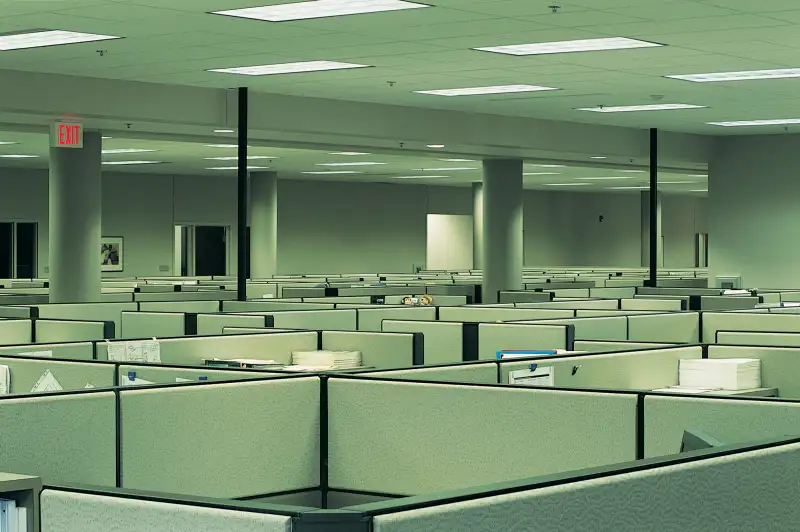What's the Deal with America's Declining Workforce?
Money is not a client of any investment adviser featured on this page. The information provided on this page is for educational purposes only and is not intended as investment advice. Money does not offer advisory services.

If you feel like the economy has finally started to gain steam, you're not alone. U.S. gross domestic product (GDP) grew by 4% last quarter, and today the Labor Department announced that employers added 209,000 jobs in July, after posting 298,000 in June and 229,000 in May.
One theme, though, that has persisted throughout the slow recovery: The share of Americans working or looking for a job is dropping, despite the improving employment picture.
While this trend has been used to illustrate how sluggish the rebound has been, it actually predates the Great Recession. Today 62.9% of Americans participate in the labor force, compared to 66.1% six years ago and more than 67% in 2000.
So, what exactly is going on?
The White House’s Council of Economic Advisers set out to answer that very question.
Last month, it issued a report dryly titled: “The Labor Force Participation Rate Since 2007: Causes and Policy Implications” in which economists cite three key developments:
#1) America is just getting older
About half of the decline in worker participation over the last seven years is due to demographics — the workforce is simply aging. About one-sixth of the population was at or above retirement age in 2009, according to the report. By 2029, that number will increase to 25%, per the Social Security Administration.
Older workers generally work less than their younger counterparts.
But, interestingly, this group is working more than it used to. From 2007 to 2014 the only age group that saw labor-force participation rates rise was the 55-and-older crowd.
Why? One reason is this generation of older workers is better educated than its predecessors. In fact, “between 1876 and 1950, the average years of schooling for each birth year cohort increased steadily every year,” per the CEA. More education means higher wages and less physically demanding jobs.
#2) Normal post-recession issues
When the economy is going well, labor participation rates tends to increase. Faster growth means businesses are more apt to hire, which means individuals without jobs feel more confident in their chances of finding work — and hence send out more applications.
When the economy shrinks, this virtuous cycle turns vicious.
“Economic contractions historically result in both greater unemployment and lower labor force participation, as nonparticipants become less likely to enter the labor force and the unemployed (who always exhibit a higher tendency to exit the labor force) become more numerous relative to the unemployed,” per the report.
The CEA estimates that about 16% of the drop in labor force participation rates can be attributed to the fact that fewer people work and look for jobs when the economy is shaky.
#3) Other Stuff
The last third of the decline is traced to two elements — one of which predates the recession, while the other may be a result of it.
The bit related to the Great Recession is long-term unemployment. Right now, more than 3 million workers have been without a job for 27 weeks or longer. While that’s down from almost 7 million in 2010, it’s still 2 million more than before the downturn.
The other rationale is a combination of long-term trends affecting different groups of workers.
For instance, younger Americans (aged 16-24) — especially those from lower- and middle-income families — have eschewed entering the work force for going to college for years now. As the value of a college education for future earnings increases, more youngsters are hitting the books.
Also, older workers who’ve been hit by the dearth of middle-skilled jobs, according research from Fed economist Christopher Smith, are now taking jobs that would have normally gone to younger workers.
After growing dramatically for the better part of 50 years, the rate of female employment has leveled off and begun to fall since the end of the 20th century, down almost three percentage points.
What’s going on? Well more women are staying home to care for their children, according to the Pew Research Center. In 2012, the percentage of stay-at-home moms increased 6 percentage points to 29% from 13 years earlier.
This is a phenomenon that’s uniquely American.
Since 1991, the participation rate of prime age working females in the Netherlands, Germany, Canada and Japan has all made significant gains, while the U.S.’s has remained flat. “Research has found that family-friendly policies are partially responsible for the rise in participation in other advanced countries, and the lack of these policies explains why the United States has lost ground,” according to the CEA.
While a higher percentage of women entered the workforce after World War II (until the 2000’s), pretty much the exact opposite is true of males. In 1948 almost 97% of men aged 25-54 worked or were looking for jobs. That number has been declining for over 60 years and is now closer to 88%.
The causes of this precipitous drop are not exactly clear, although some research shows that the decline is in part due to the fewer jobs based on brawn.
The implications
This picture of the labor market complicates recent reports showing an accelerating economy and increased employment. It also helps explain why the Federal Reserve, led by chair Janet Yellen, isn't that eager to quickly raise interest rates despite positive economic reports and slightly higher inflation.
And while a certain percentage of the decrease in labor force participation rate can be attributed to the recession, a lot of the decline is bigger than that.
The question now is will Americans return to the labor force in greater numbers without new policies by the Congress and the White House that address long-term headwinds facing American workers?
